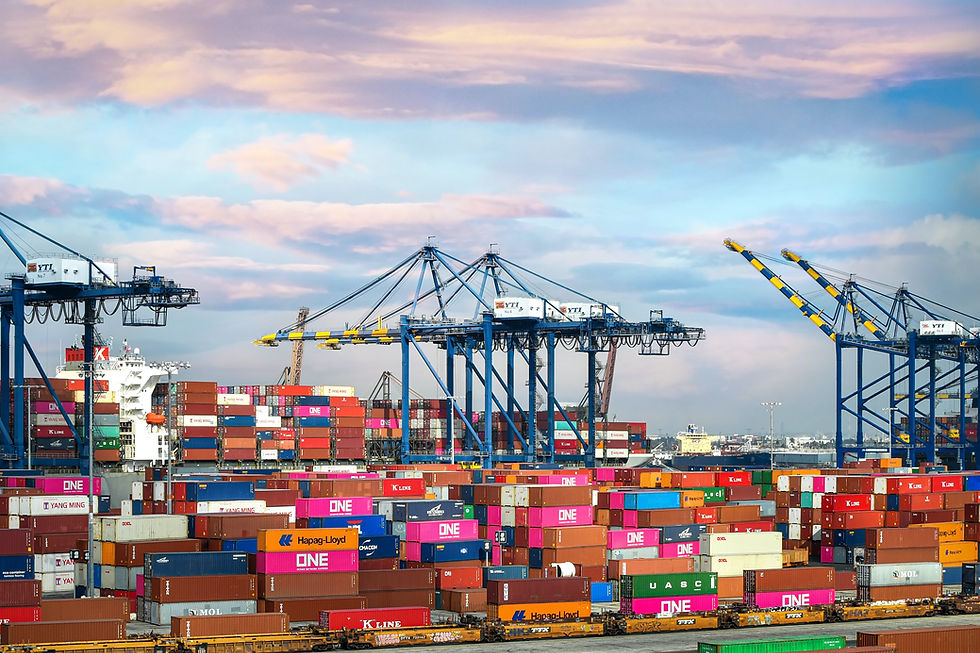Introduction to Commodities: Pillar of Global Trade.
- Zuma Global Commodities
- Feb 27
- 3 min read
Updated: Feb 28
Commodities are the foundation of global trade and investment. In these articles, we'll explore their definition, importance, and trading, as well as analyze current trends in their demand. You'll learn what makes them essential to the economy, how they are traded in physical and financial markets, and what factors influence their value. From energy and metals to agricultural products, you'll learn about the impact of these commodities on industry and the opportunities they offer to businesses and investors.

Commodities
Commodities are basic goods and raw materials essential to the global economy. They are traded on international markets and their price varies according to supply and demand. They are divided into two main categories:
Energy Commodities:
These include oil, natural gas, coal and biofuels. They are essential for transportation, industry and power generation.
Agricultura Commodities:
Such as wheat, corn, soybeans, sugar and coffee. Their price depends on weather factors, crops and trade policies.
Metals and Minerals:
Copper, aluminum, gold and silver. Used in manufacturing, construction and technology.
Soft Commodities:
Products of agricultural or forestry origin such as cotton, cocoa and wood.
Commodities are highly liquid assets, traded on markets such as the NYMEX (New York Mercantile Exchange) and the ICE (Intercontinental Exchange). Their global trading makes them key elements of the economy and investment
What Are Commodities and Why Are They So Important?
Commodities are interchangeable goods without brand or manufacturer differentiation. They are the heart of international trade and investment in financial markets.
Characteristics of Commodities:
They are fungible: No matter the supplier, their value is standard.
They are volatile: Factors such as geopolitics, climate and regulations affect their prices.
They are traded in organized markets under standardized contracts.
Types of Commodities:
Energy: Crude oil, natural gas, gasoline.
Metals: Gold, silver, copper, aluminum.
Agricultural: Corn, wheat, soybeans, sugar.
Soft commodities: Coffee, cocoa, cotton.
Commodities not only impact the global economy, but are also investment assets in futures and options markets. Their relevance lies in their role as fundamental inputs in almost all industries.
How are Commodities Traded?
Commodities are traded in physical and financial markets. Their trading follows two main approaches:
Spot Markets (Physical)
In these markets, buying and selling occurs with immediate delivery or in a short period of time. They are common in commodities such as oil, natural gas and industrial metals.
Futures and Derivatives Markets
Futures contracts allow a commodity to be bought or sold at a certain price and date. They are traded on exchanges such as:
Chicago Board of Trade (CBOT) – Grains and agricultural products.
New York Mercantile Exchange (NYMEX) – Oil, gas and metals.
London Metal Exchange (LME) – Industrial metals.
Commodity trading is a key activity for companies, governments and investors, as it offers opportunities for risk hedging and speculation in a highly dynamic global market.
Current Commodity Demands: Key Drivers and Trends
The commodity market is constantly changing due to the interaction of macroeconomic, geopolitical and technological factors.
Key Drivers Impacting Demand:
Global Economic Growth: Developing countries drive demand for metals and energy.
Energy Transition: Increased use of renewable energy and decreased use of fossil fuels.
Climate Factors: Events such as droughts and frosts affect agricultural production.
Geopolitical Instability: International conflicts and economic sanctions can affect the availability of key commodities.
Current Trends:
High demand for lithium and copper due to the rise of electric vehicles.
Volatility in oil due to OPEC and geopolitical tensions.
Growth in grain trade due to the need for food security.
The commodities market will continue to evolve, and understanding these factors is key for companies and investors looking to take advantage of opportunities in this sector.
Use this space to tell readers what they should do next. Invite readers to leave a comment, or add a button with your main call-to-action, e.g., Buy Now or Subscribe.
Comments